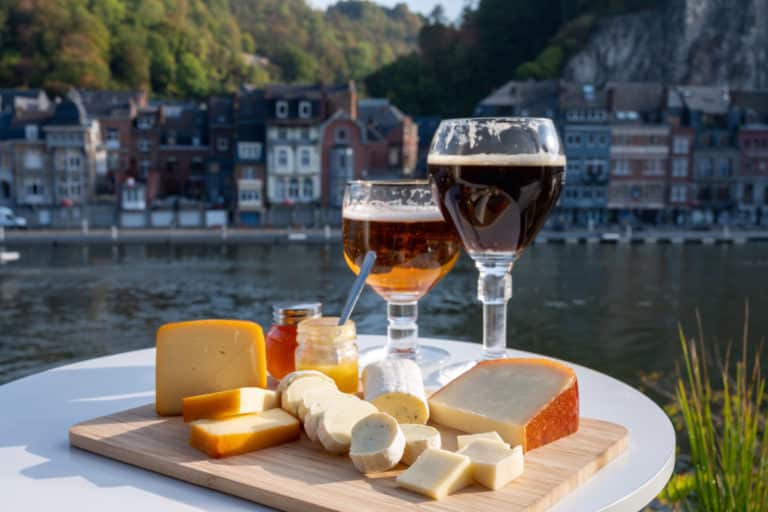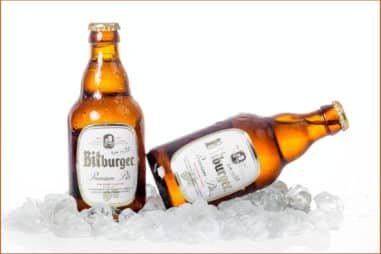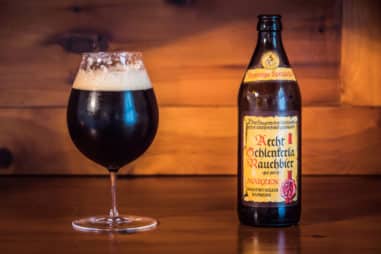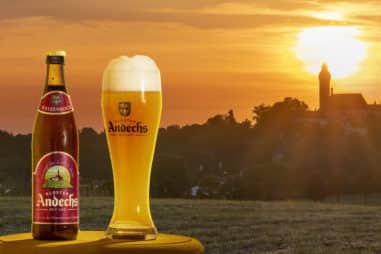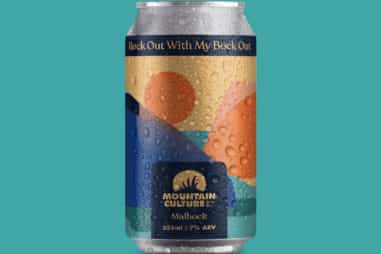So, what truly is an Abbey-style beer?
How can you tell an Abbey beer from a Trappist ale? Do both beers taste the same? And if they do, why do they have different names?
Or better yet, why do both beers look and taste similar? To define an Abbey beer, you also have to define a Trappist beer. Confused?
Don’t worry.
Here’s a hint as to what defines an Abbey beer. It all boils down to certain criteria that need to be met.
What Is an Abbey Ale?
An Abbey ale is brewed in the same style as a Trappist ale is brewed, except it’s not brewed within the walls of a monastery/abbey.
That’s really mostly it.
That’s what an Abbey ale is. However, the best way to define an Abbey beer is by differentiating it from Trappist ales (more on this later).
There are 4 different types of Abbey beers or Trappist ales you’ll find today:
- Enkel: Also means single. Enkel is the original style or basic recipe monks brewed back in the day made for everyday drinking. Think of Enkel like your regular Session Ale.
- Dubbel: Dubbel, or double, is a stronger brewed version of an Enkel. Most Dubbel recipes include sugar syrup, which also gives it a distinct brown appearance. It has a malty flavor, light caramel or fruity notes, and soft bitterness.
- Tripel: It’s obviously a stronger version of a golden ale, and has an ABV of 9%. Aside from its stronger alcohol content, it imparts floral, spicy, and sometimes orange citrus notes.
- Quadrupel: It’s easy to tell a Quadruple apart from the other three. For one, it has a dark brown or black appearance. It’s also the heaviest among all types. Expect an intense malty flavor, complex fruitiness, warmer alcoholic taste, and balanced bitterness.
What Makes an Abbey Ale?
What makes an Abbey ale is the standard or criteria it meets. Defining an Abbey ale by flavor or aroma notes doesn’t sit right. And that’s mostly because, first, Trappist beers are defined by their origin. Second, Abbey ales are only different from Trappist beers due to naming conventions and strict religious codes.
That being said, here is the list of criteria of what makes an Abbey ale:
- Abbey ales are made by any commercial brewery that has a license. Alternatively, if there is a commercial arrangement with an active monastery, this counts as an Abbey ale too.
- An Abbey ale has no religious connection to its purpose of brewing.
- Abbey beers can be produced by any monastery, including non-Trappists.
- Abbey beers may also feature religious symbols, monks, or abbeys but don’t specifically refer to a monastery.
Ultimately, if the beer isn’t brewed inside the walls of a monastery, it’s considered an Abbey ale.
But wait.
Does that mean then that any commercial brewery can bear the name “Abbey beer” in its label? Not quite.
What’s important to remember is the brewery that makes Abbey beers should have some historical connection to the abbey or monastery.
Abbey beers also do not have to follow the same religious order that Trappist monks adhere to. One of the criteria for Trappist beers is that all proceeds or profit gained should only be used for:
- The maintenance or management of the brewery
- To support the livelihood of Trappist monks and the monastery
- For charity or local project community donations
Abbey beers do not have to follow the same criteria as stated above.
Finally, if a brewery is associated with an abbey or monastery, a certain percentage is donated to the associated abbey. This is mainly to help with the abbey or monastery’s maintenance costs.
What Do Abbey Beers Taste Like?
Most of the Abbey beers today are either a Dubbel or Tripel. It’s rare or even close to impossible to find an Enkel nowadays.
Abbey beers have a strong or prominent malty taste/flavor. And that’s because malt is a prominent character in both Abbey and Trappist beers.
Other flavor notes you’ll taste in an Abbey beer include raisin fruitiness and a gentle caramel flavor. Sometimes, you’ll taste coffee instead of caramel.
The caramel flavor is mostly due to the candy sugar syrup that’s used in the brewing process. In fact, sugar is a key ingredient in making Abbey beers.
Is there hoppiness in an Abbey beer? There is, but only a slight or gentle bitterness. Abbey beers aren’t hop-forward. Forget hoppy bitterness when drinking an Abbey beer.
What Is the Difference Between Abbey and Trappist Beer?
The biggest difference between an Abbey and Trappist beer is that Abbey beers aren’t brewed within the walls of a monastery or abbey.
It’s possible that a commercial brewery will have an arrangement with an abbey. This way, the brewery handles the production of Abbey beers.
It’s far different from Trappist beers because Trappist beers are brewed inside the abbey itself. There’s no third party or another brewery that handles the production.
Another difference between the two is how the profits are managed. All profits gained from Trappist beers are strictly used to support the monastery or donate to charity.
For Abbey beers, only a certain percentage of the profit is given back to the abbey or monastery associated with the brewery.
It’s worth noting that Abbey beers weren’t always so…different. And the best way to understand this is by going back a few hundred years to the time of the French Revolution.
Where Did Abbey Beer Come From?
Back in the 17th century, monks of Northern France, known as Trappists, brewed Trappist beers for their personal enjoyment.
Eventually, Trappist beers spread throughout local communities and the world.
However, in 1796, brewing Trappist beers came to a halt. Enter the French Revolution.
It was during this time that the monasteries were sacked and looted, causing a complete halt to brewing Trappist beers.
Poor monks.
Fortunately, brewing Trappist beers resumed once again in the 1940s. It wasn’t long until Trappist beers regained its reputation.
And then…
The biggest problem in Trappist beer history happened.
There were brewers who made Trappist beers but had never entered or even set foot in a monastery. Some brewers were kind enough to remit some of their profits to monks.
But there were others who kept all the profit to themselves. Worse – these unkind brewers even featured a picture of a monk on their bottle label. They even named some of their beers after a monastery or saint!
At first, the monks didn’t want to interfere. They kept their distance, hoping it wouldn’t turn into a big ball of mess.
They were wrong.
One brewery – Veltem brewery of Leuven – released a beer named Veltem Trappist, that was the last straw.
And it was when the Abbaye Notre Dame d’Orval filed a legal suit to stop the madness of this so-called Veltem Trappist in 1960.
And what was the verdict? Guilty as charged.
The Belgian Trade and Commerce court issued its ruling. And that ruling stated 2 crucial points:
- The name “Trappist” refers to beer that must be created and sold by Trappist monks or monks belonging to the Trappist order.
- Any beer created in the Trappist style but not brewed by monks is referred to as “Abbey beer.”
And it was this ruling that gave rise to the name Abbey beer.
How to Make Abbey Ale?
A great Abbey Ale uses a generous amount of malt/grains and sugar. Caramelized malt varieties like CaraMunich or CaraVienna are good additions, but it’s your base malt you should pay attention to.
Aside from your malt and sugar, yeast plays the biggest role of them all.
Yeast strains are the most important because it separates an Abbey beer that’s ‘meh’ from a lip-smacking Abbey beer.
And finally, your hops. Hops aren’t as important compared to your malt or yeast in an Abbey beer. However, finding the right balance is still crucial.
The purpose of adding hops in an Abbey beer is mainly for balance. You want a good bitterness (around 25 to 27 IBU) to balance your Abbey beer’s flavor and not overpower the flavor or the aroma.
Abbey ales aren’t IPAs. It’s almost like Abbey ales are the antithesis of IPAs. So even if you do love your hops, try to refrain from going overboard.
Styrian Goldings, Fuggles, Tettnang, and Saaz are all good hops to use.
Does this sound overwhelming? Don’t worry. Below is a complete breakdown, from hops to malt to yeast, on how to make your own Abbey beer.
Hops for Abbey Ale
For your hop selection, Abbey ales should use Noble hop varieties. Don’t go for any American or New Zealand varieties.
Belgian ales in general lean more towards Noble hop varieties than classic American hops. Some examples of Noble hop varieties include:
- Hallertauer
- Tettnanger
- Spalt
- Saaz
However, brewers will also use hop substitutions or add bittering hops to give Abbey ales some bitterness.
A good IBU to aim for is between 23 to 27 IBUs.
A few substitutions that brewers might use in making an Abbey ale include the following:
- Liberty (mostly for bittering)
- Styrian Golding
- Fuggle
- Willamette
- Hallertau Mittelfruh
- Lublin
- Strisselspalt
- Hersbrucker Spat
Abbey Ale Fermentation
How long should you ferment an Abbey beer? Most package labels will say 4 days at best.
However, this isn’t the case. Abbey beers just like Trappist beers taste better with age. Primary fermentation for Abbey ales should last between 3 weeks to 1 month.
Too much?
Before you start worrying, it’s worth noting that Trappist beers undergo 1 week of fermentation followed by 2 weeks of being kept in a storage vat.
Then, more yeast and sugar are added to trigger a secondary fermentation that lasts another 2 to 3 weeks.
And finally, bottle conditioning can be as long as 6 months to a year.
Put it this way. What makes a great Abbey beer is the amount of time it ages. If you rush an Abbey ale, you’ll just be disappointed with the end result.
Now, secondary fermentation isn’t necessary. However, 3 weeks to 1 month of primary fermentation is the recommended standard.
Use a hydrometer to check your final gravity. This will also tell you whether fermentation is done. The only concern with fermenting for a long time is the yeast character.
The longer your fermentation period, the more yeast character your Abbey ale will have. If that’s not something you want, then 3 weeks should be a good target.
Finally, a good fermentation temperature would be between 66°F (18.89°C) to 68°F (20°C).
Abbey Ale Yeast
Go with Belgian ale yeast strains. It’s what gives Belgian beers their distinct quality. Good yeast options include the following:
- White Labs WLP500
- White Labs WLP550
- White Labs WLP530
What Grains to Use for Abbey Ale?
Malts make up a significant part of brewing an Abbey ale, and that’s because malts are really the star of the show.
Pilsner malt is an ideal base malt to start with for an Abbey ale. You’re also free to add other malts like CaraMunich, CaraVienne, and Biscuit malts.
However, these grains aren’t as significant as Special B malt. Special B is what gives Abbey ales their raisin-like flavor notes. Just make sure you don’t use too much. 3 to 4 lbs. (1.36 to 1.81 kg) of Special B malt should be enough.
A sample grain bill could be:
- 80% Pilsner malt
- 10% Table sugar or corn sugar
- 5% Biscuit malt
How Much Sugar Should I Use When Brewing Abbey Beer?
A good amount of sugar to use when brewing Abbey beer is 7.5%. The best thing about adding sugar is it boosts your ABV without altering the body of your beer.
Table sugar is fine, but if you can get your hands on turbinado or piloncillo sugar, then that would be better. If you feel 7.5% is too low, you can bring that up to 10%. Having 10% to 15% of sugar in your entire grain bill isn’t a bad decision.
Can You Add Spices Along With Sugar for Abbey Beer?
Sure, you can!
After all, some Abbey beers have floral and spicy notes. With 5 minutes left in the kettle boil, add in your sugar and spices.
Some add orange peels. Others might throw in coriander, cumin, licorice root, or even crushed black pepper.
How Long Should Bottle Conditioning Be for Abbey Beers?
The golden rule in brewing an Abbey beer is: more time is always better.
Some go as far as bottle condition their Abbey beers for 6 months or 1 year. And to be honest, that’s going to be a ‘darn tootin’ and lip-smacking Abbey beer.
Now if you can’t wait that long, at least give it about 1 to 2 months to bottle condition. As for temperature, you can let it sit between 47°F (8.33°C) to 50°F (10°C).
Glasses for Abbey Ale
For an Abbey ale, always go with a chalice/goblet glass.
Does it matter? Hell yes, it does. A normal glass might seem fine. But that’s how you would normally feel if you’ve never tried drinking an Abbey or Trappist beer from a chalice glass.
Why does it matter, you ask?
For starters, a chalice glass provides good foam retention. Second, it’s better if you’re the type who enjoys taking big gulps.
And third, the shape and design of a chalice/goblet glass enhances the flavor notes and allows you to breathe the complexity of aromas better.
You could say that it’s simply for the experience. But really, getting the right glass for your beer is how you appreciate the beer style even more.
Abbey Ale Brands
If you’re on the hunt for Abbey beers, don’t bother with Enkel beers. They’re extremely hard to find. Most abbey beers will either be a Dubbel or Tripel.
Below is a list of Abbey beers and the breweries that make them.
| Abbey Beers | Brewery |
| Ommegang Abbey Ale | Ommegang Brewery (Duvel Moortgat) |
| Lost Abbey Lost and Found | Port Brewing Company |
| Corsendonk Pater – Abbey Brown Ale | Brouwerij Corsendonk |
| St. Bernardus Prior 8 | St. Bernardus Brouwerij |
| Westmalle Dubbel | Brouwerij der Trappisten van Westmalle |
| Dogfish Head URKontinent | Dogfish Head Brewery |
| Bell’s Hell Hath No Fury | Bell’s Brewery |
| Paix Dieu | Brasserie Caulier |
| Saint Feuillien Grand Cru | Brasserie St-Feuillien |
| Triple Karmeliet | De Bosteels Brewery |
| Leffe Blond/Leffe Brune | Leffe Brewery |
| Witkap Pater Stimulo | Slagmuylder Brewery |
| Poperings Hommelbier | Leroy Breweries |
Does New Belgium Still Make Abbey Ale?
Unfortunately, New Belgium doesn’t make Abbey ales anymore. This happened back in February 2021. However, New Belgium mentioned they were in the midst of releasing new beers with the spirit of Abbey in mind.
Most of what you’ll hear about today regarding New Belgium is their Voodoo Ranger beer lineup.
Where to Buy Ommegang Abbey Ale?
It’s always best to buy Ommegang Abbey ale from the official Brewery Ommegang website itself. This way, you’re highly likely to get the best and freshest quality.
However, there are still a lot of online platforms that sell Ommegang Abbey ale, such as:
- Drizly
- Craftshack
- Total Wine
- Half Time Beverage
- HEB
- Instacart
Some were also able to drink Ommegang Abbey ale in physical locations like Celebrity Equinox and The Abbey.
It’s worth checking Untappd to see where fellow beer drinkers buy Ommegang Abbey ale.
How to Serve Abbey Ale?
Much like Trappist beers, Abbey ales shouldn’t be served too cold.
The general rule of thumb when it comes to Trappist or Abbey beers is, the colder it is, the less you taste.
A good serving temperature is 46.4°F (8°C) to 50°F (10°C). As for food pairings, you can’t go wrong with cheese!
Try pairing your Abbey ale with Camembert or Brie. If you’re drinking a Dubbel or Tripel, it pairs even better.
Why? Because the high ABV cuts through the fattiness in cheese. Now, don’t worry. Because cheese isn’t your only option.
You can also pair an Abbey ale with high-fatty food like duck or venison. And don’t forget sausages either!
Finally, for meaty lovers, whip up some roast beef or a juicy rib-eye steak. The caramelized fat is a great compliment for Abbey ales.

